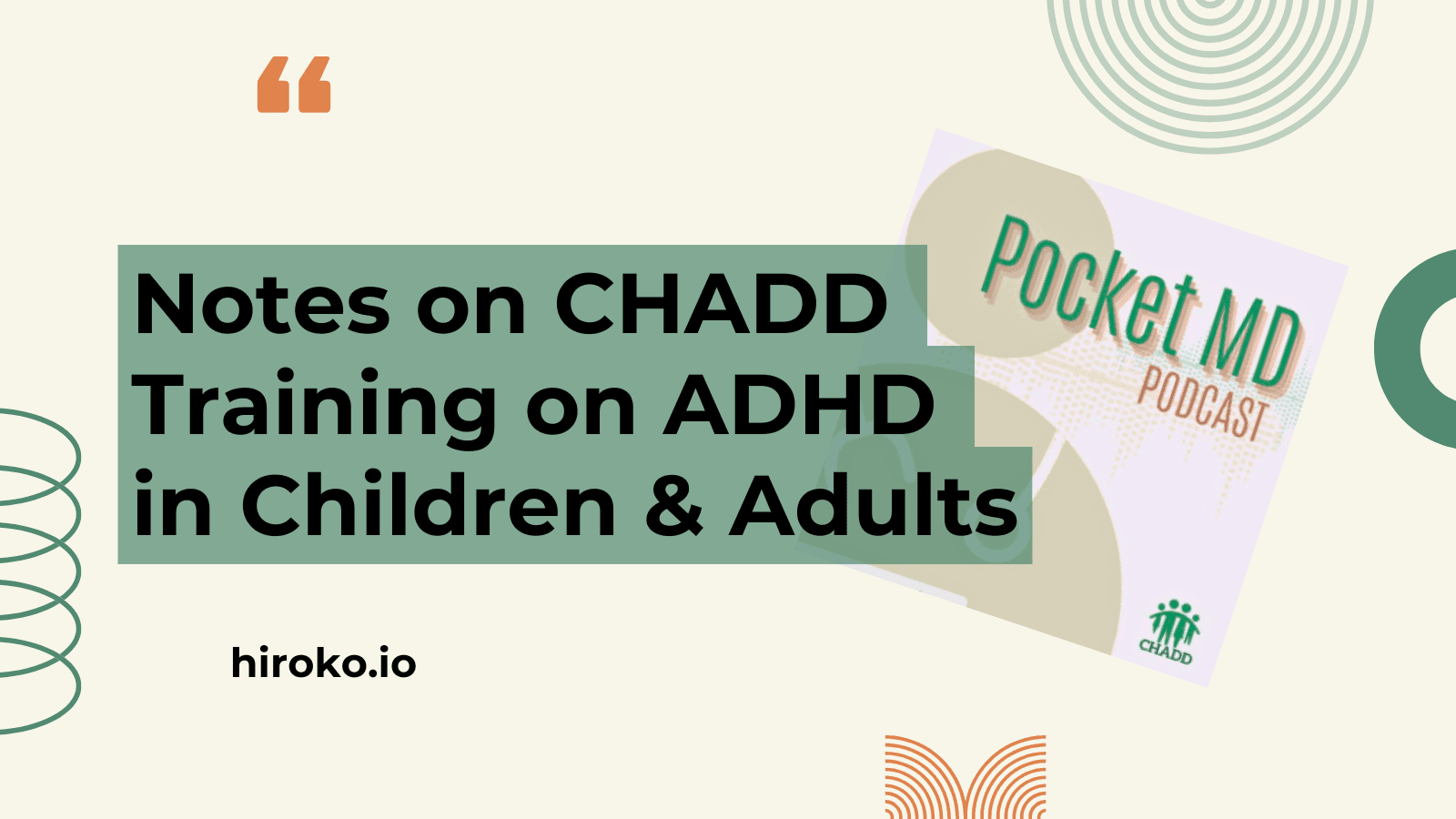This post summarizes the podcast titled “Occurrence of ADHD in Adulthood” in the series “Training on ADHD in Children and Adults” by Pocket MD. Pocket MD is a podcast hosted by CHADD (Children and Adults with Attention-Deficit/Hyperactivity Disorder).
“The Occurrence of ADHD in Adulthood” (PD4457-040121BR)
ADHD in adulthood
- What is ADHD: syndrome recognized by behavioral manifestations, typically with self-control difficulties
- “Underperformance relative to potential” perceived by self or others; large effort with small returns
- Prevalence: 4%
- Challenges with diagnosis: people who have symptoms vs people with symptoms that impair their functioning (required for full diagnosis)
- More balanced sex ratio in adulthood (not understood how much is biological differences and how much is social phenomenon of gender biases)
- ~60% of adults with ADHD have other mental health conditions
- Most important to provide self-understanding with understanding that ADHD can manifest dynamically and needs change over time, and self-knowledge and knowing where to seek help when necessary is vital
Diagnosing ADHD in adulthood
- Symptoms change throughout the lifespan
- “Core symptoms” same as children with ADHD: issues with self-regulation, attention, behavior
- Symptoms may shift from hyperactivity and impulsiveness in children to attention and organization issues in adulthood
- Adults are more behaviorally in control than children because the “base level” of self-control increases with age
- DSM-5: need less symptoms than children to be diagnosed (5 out of 9 criteria as opposed to 6 out of 9 for children)
- Less about the number of symptoms, and more about whether there is an impairment or not
- Impairment in 2 of 3 major life roles: self-care, social involvement, work or school
- Diagnosis in adulthood has different informant of the information (there is no “teacher from school” that will be involved like with a child’s diagnosis)
- More focus on individual’s perception as they are able to self-reflect better as adults
- Retroactively should have manifested symptoms before age of 12 (very subjective because we can’t see into the past)
Developing understanding of ADHD in adulthood
- ADHD was thought of as a childhood disorder that disappears when children hit adolescence or early adulthood
- Recently understood to persist into adulthood as chronic neurodevelopmental disorder
- New research suggests that there can be new onset of adulthood in ADHD, but not decisive and hotly debated
- May be that there were factors that allowed children to thrive (high IQ, high involvement/support from teachers and parents) and problems surfaced as they grew older and became more independent
- Potentially, were very close to diagnosis in childhood, with additional complexities in adulthood (substance abuse, depression, etc.)
- If starts in adulthood, maybe it’s a completely different disorder/syndrome from nosological perspective
- Those diagnosed with ADHD as adults (or began experiencing impairments as adults) need different type of support and treatment from those who have had impairments since childhood
Evaluating ADHD in adulthood and potential other issues
- Systemic health and conditions involving can affect brain functioning, especially as we age, which could look like ADHD (sleep disorders, uncontrolled diabetes, lead poisoning, encephalopathy, etc.)
- Brain is plastic, so there may have been periods where certain circuitry did not develop properly due to some external factors that may lead to ADHD-like symptoms
- Does another syndrome explain it better than ADHD?
Want to read more of my summaries?
Main page on this blog that collects all of these summaries (and links to course content) is here:
